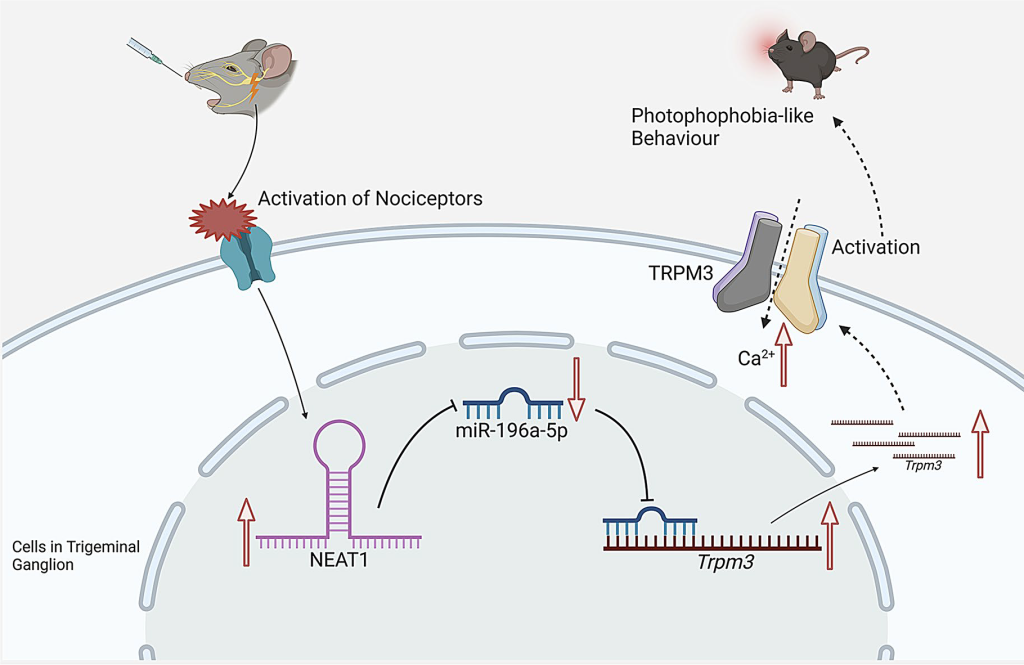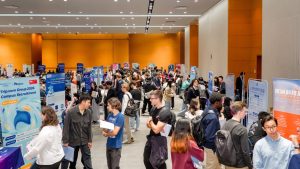22 May 2025
Knowing the molecule behind light sensitivity in migraines could open the door to better treatments
Scientists in the UK, Australia and China have identified a brain molecule called NEAT1 that appears to play a central role in triggering light sensitivity (photophobia), a common and debilitating symptom of migraines. Their findings, published in The Journal of Headache and Pain, highlight how this molecule affects the brain’s pain response, contributing to the uncomfortable reaction to light that’s common during migraines.
NEAT1 belongs to a group of molecules known as long noncoding RNAs. Unlike most RNA, which carries instructions for making proteins, long noncoding RNAs regulate various cellular processes and help control how other genes function. NEAT1 is known to be involved in inflammation and stress responses in the nervous system. However, its exact role in migraine-related symptoms like photophobia had not been previously studied.
The researchers used a special chemical to trigger light sensitivity in mice, mimicking how migraines affect people. They then examined a region of the nervous system called the trigeminal ganglion, which is known to be involved in migraine pain. They discovered that NEAT1 levels in this region rose significantly during episodes of light sensitivity.
“When we lowered the amount of NEAT1, the mice became less sensitive to light,” says the study’s first author, Zhuoan Huang, a PhD student at Xi’an Jiaotong-Liverpool University (XJTLU) and the University of Liverpool. “That told us NEAT1 was likely playing a direct role.”
The team found that NEAT1 interacts with two other important molecules in the brain. One is a microRNA known as miR-196a-5p, which normally helps keep the gene Trpm3 in check. Trpm3 produces a protein involved in nerve signalling and pain. When NEAT1 levels are high, it binds to miR-196a-5p, preventing it from doing its job. As a result, Trpm3 levels rise, nerve sensitivity increases, and light becomes painful.
“In short, NEAT1 disrupts the normal balance,” says Huang. “It makes nerves more sensitive and more likely to react to light.”
The researchers also found that blocking either NEAT1 or the TRPM3 protein significantly reduced light sensitivity in mice.
“This supports the idea that this pathway is important,” explains Professor Minyan Wang of the Department of Biosciences and Bioinformatics at XJTLU's School of Science, who led the study.
“Our research reveals a chain reaction where NEAT1 affects a microRNA, which then changes the activity of a gene linked to pain. This helps explain, for the first time, how light sensitivity might develop during migraines. This study reveals for the first time that light sensitivity can be augmented by this specific type of RNA.”
The findings offer a new perspective on a puzzling migraine symptom and suggest that NEAT1 could be a potential target for future treatments. Since the study was conducted only in male mice and migraines are more common in women, further research is needed to explore its role in females and humans.
“This could be the beginning of a new approach to managing photophobia in people with migraines,” says Professor Wang. “It gives us a better understanding of what’s happening in the brain and where we might intervene.”

NEAT1 may contribute to light sensitivity during migraines by disrupting the activity of other molecules in the brain, leading to increased TRPM3 levels and heightened nerve sensitivity. Credit: Huang et al,. DOI 10.1186/s10194-025-02057-5
Edited by Catherine Diamond and Patricia Pieterse
22 May 2025







